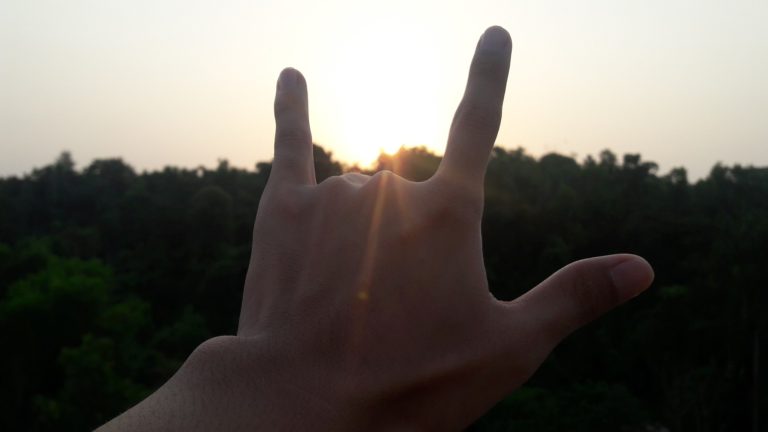Do you use hand gestures like “Hang loose” or “Okay?” Does it offend you if someone wears a short skirt or shoes into your place of worship? How do you feel if people stand too close or too far when speaking to you? What bothers you more – same sexes holding hands or opposite sexes holding hands? Have you ever considered someone over- or under-dressed for the occasion?
Hang Loose
The Shaka sign, sometimes known as “hang loose”, is a gesture of friendly intent often associated with Hawaii and surf culture. In other cultures, this hand gesture is known as the “sign of the horns.” It is used to ward off bad luck, the “evil eye,” and expulse demons. Whether the “horns” are up or down can alter the intent.
Okay
Everything’s okay, right? The “OK” gesture is used by divers to indicate everything is alright. If you make this sign below the waist in the “Circle Game,” when making eye contact with someone within the circle, that person can punch you in the arm. Ouch! More disturbingly in 2017, this gesture became the symbol of “white power.”
In France receiving this gesture indicates you are worthless. Don’t use this gesture in Venezuela and Brazil towards another person unless you want to call that person a “backside.” This gesture is not “okay” in many cultures.
Personal Space
We all have our personal space, which when invaded can cause discomfort. The size of this space is influenced by our culture.
“…our personal boundaries have a lot to do with where we grow up. These researchers sort the world into “contact cultures” (South America, the Middle East, Southern Europe) and “non-contact cultures” (Northern Europe, North America, Asia). In non-contact cultures, people stand farther apart and touch less.”
Physical Contact
Do two men walking with arms linked make you uncomfortable. What about two women? A man and woman? Really, it shouldn’t matter. We should all be able to display friendship regardless of the form it takes. But it does matter, and how it matters depends on where you’re from.
In Western culture, romantic couples hold hands as a sign of affection. In Arab countries, Africa, parts of Asia, and some Mediterranean cultures, hand holding between men is a sign of friendship and respect. This is also a sign of friendship between women in many cultures.
Attire
In the politically correct world of today, how you dress shouldn’t matter, but we all know it does. The way it matters depends on the culture you are from. A friend of mine visited Cuba. She was upset when she was given a shawl to wrap around her lower half to cover her knees, in order to enter a church. Her skirt was too short, and therefore disrespectful in a holy place.
In Myanmar, as well as many other Southeast Asian countries, it is a sign of disrespect to enter sacred grounds in your shoes. This is not to protect your beautiful wood floors or newly installed wall-to-wall carpeting. Rather, it is another sign of respect. You do not bring the dirt and grime of the streets into sacred places. It also applies when entering homes.
Casual dress or formal attire also sends different messages in different cultures. Knowing the customs can prevent embarrassment and insult.
Knowing this makes sense if you are going to travel to these countries, but why does it matter in translation? The images you use matter. Colors, gestures, attire, are a reflection of culture. If you use images that are offensive to another culture, the translation will fail.

